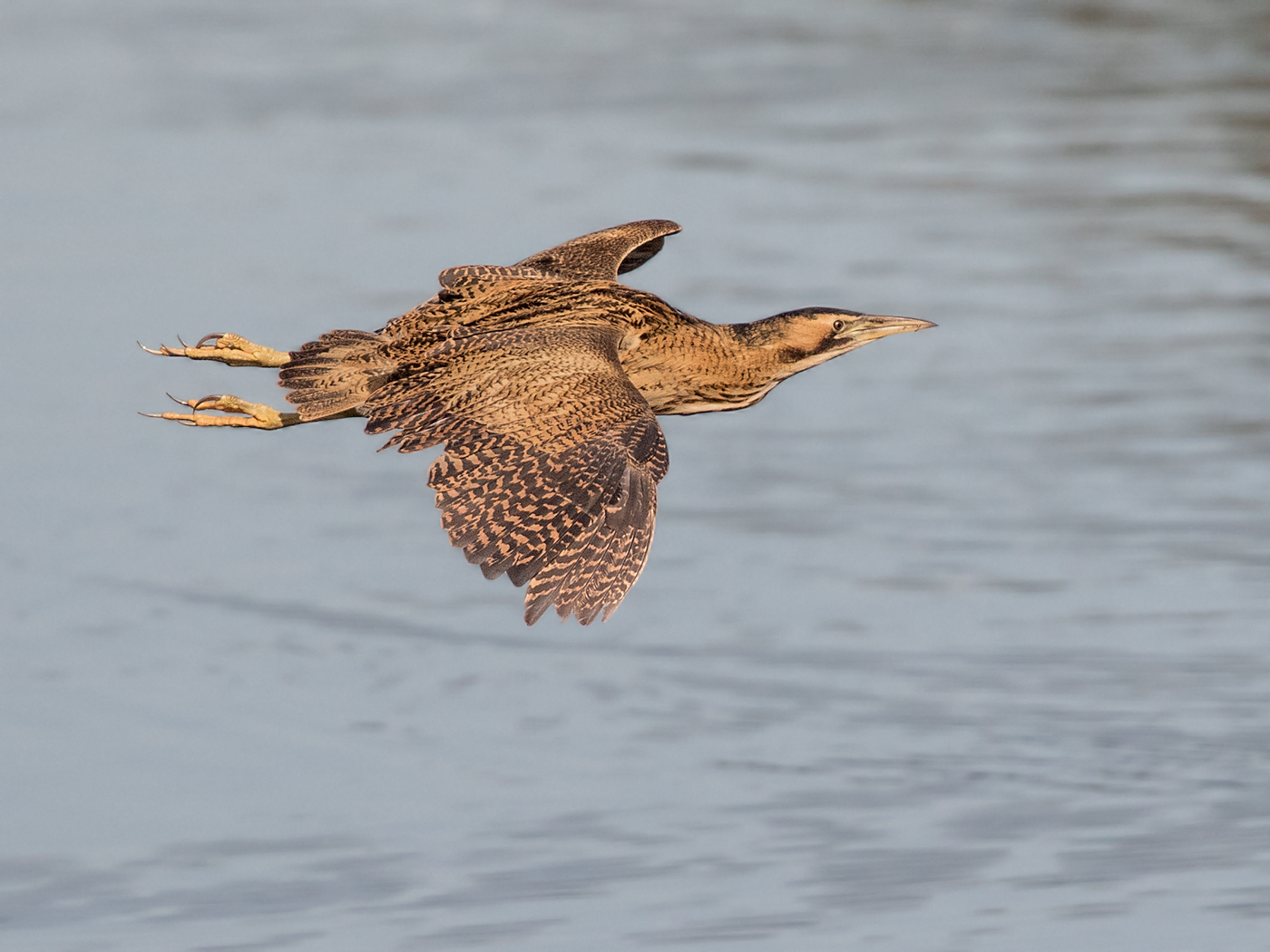Bittern baby boom
Bittern has experienced its most successful year yet for breeding, according to an annual national survey carried out by RSPB staff and volunteers.
The bulky brown-streaked heron became extinct in Britain at the turn of the 20th century, but its numbers have increased steadily since the RSPB and other conservation organisations have managed reedbed habitats intentionally for the species, which is now well and truly re-established.
Scientists count Bitterns by listening for the male's foghorn-like 'booming' call, which usually indicates the holding of a breeding territory, and this year numbers increased to at least 161 recorded at 76 sites. That compares to 157 at 72 sites in 2015, and is a further positive sign that the species is back from the brink and thriving.
A highlight this year was the discovery of two nests on Otmoor, Oxfordshire — the first time they have been confirmed nesting at this site. Meanwhile in Wales, the first nest for over 30 years was found at Malltraeth Marsh RSPB, Anglesey. The first booming was also recorded this year at Newport Wetlands RSPB.

Bittern (Photo: Norman West)
Simon Wotton, senior conservation scientist at the RSPB, said: "In the late 1990s, Bittern was heading towards a second extinction in the UK, largely because its preferred habitat — wet reedbed — was drying out and required intensive management, restoration and habitat recreation. But, thanks to efforts to improve the habitat, the [species] was saved and we're delighted to see it going from strength to strength."
The increasing number of Bitterns identified, thanks to the careful management of reedbeds across the country, shows that conservation really can make a difference in bringing a species back from the brink. An increase in reedbeds is also benefiting other species such as Reed Leopard Moth, Bearded Tit, Water Vole and even Otter.
Bittern was absent as a breeding bird between the 1870s and 1911, and as such was declared extinct in Britain. As well as losing habitat after England's wetlands were drained, Bitterns were also sought by taxidermists and egg collectors. There are thought to be more stuffed Bitterns in Norfolk than there are live birds.
Bittern numbers rose to around 80 booming males in England in the 1950s, but had declined to only 11 in 1997. Concern over a second British extinction led to the concerted conservation programme that is driving the current recovery.
Martin Harper, RSPB's conservation director, added: "Bittern is a species which proves that conservation can be successful, especially when you can identify the reason behind its decline and bring in measures and funding to aid its recovery.
"The success of projects like this are even more important as government considers its plan to restore biodiversity in 25 years: a target-led approach to conservation supported by a partnership between government, NGOs and landowners with resources necessary to transform landscapes."
Over the last 25 years there have been several significant habitat-restoration projects, some of which are now RSPB nature reserves, including:
- Ham Wall RSPB, Somerset, which was created from old peat workings in 1995. Bittern has been booming regularly from 2008, with its first nesting also in that year. In 2016, 19 booming males were recorded at the site.
- Lakenheath RSPB, Suffolk. This wetland site was converted from carrot fields in 1995, and Bitterns were first recorded booming there in 2006, with the first confirmed nesting in 2009. This year six booming males were recorded on site.
- Ouse Fen RSPB, Cambridgeshire. This partnership project with cement company Hanson has seen wetland creation from former mineral workings, starting around 10 years ago. In time, it will become the largest reedbed in the country. The first confirmed booming was in 2012, with eight pairs recorded in 2016.

